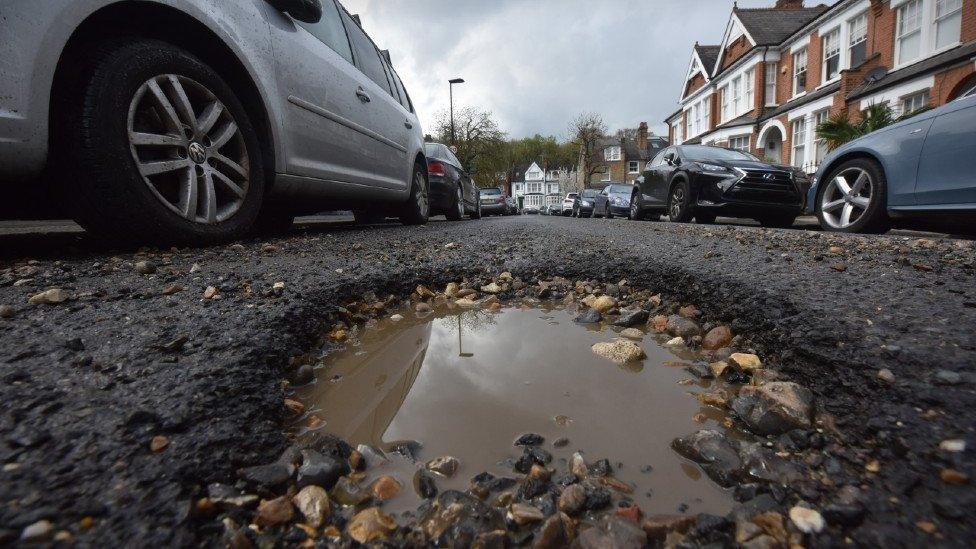Potholes 'getting worse' on rural roads despite £500m spend
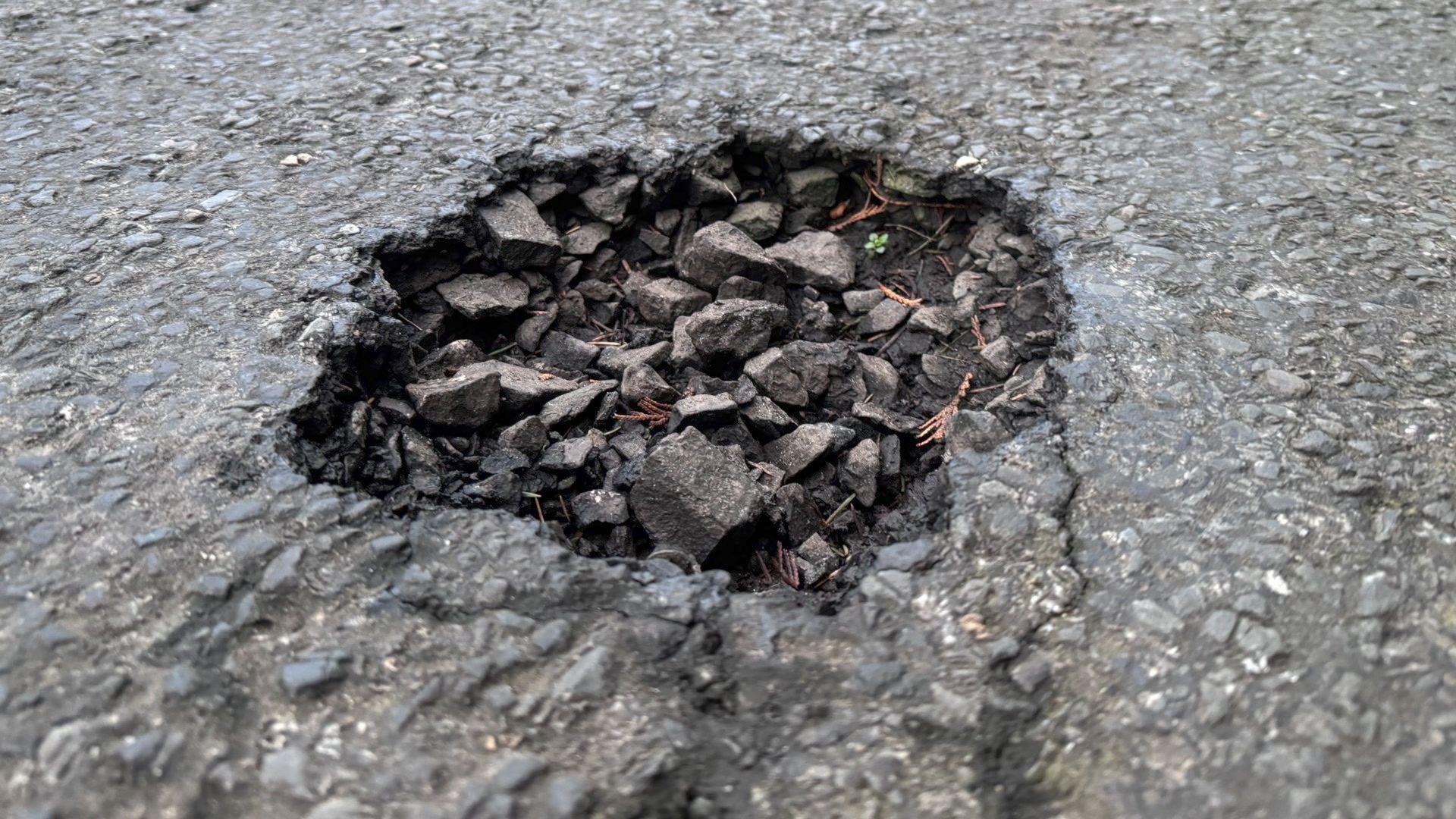
There have been almost 120,000 road defects and potholes recorded in Northern Ireland since January this year
- Published
Potholes and the deteriorating conditions of rural roads are affecting journeys with vulnerable passengers, a transport provider has said.
Frances Scullion is a driver with Out and About Community Transport in Magherafelt, a charity that offers lifts and day trips to elderly and vulnerable adults.
“I have passengers in their 90s and wheelchair users, and some of the rural roads I drive on are just getting in worse condition, so you just have to always be extra vigilant,” he said.
New figures show that more than £500m has been spent on trying to fix Northern Ireland’s roads during the last five years.
But Mid Ulster, where the largest amount of money was spent, still has one of the highest numbers of potholes in Northern Ireland.
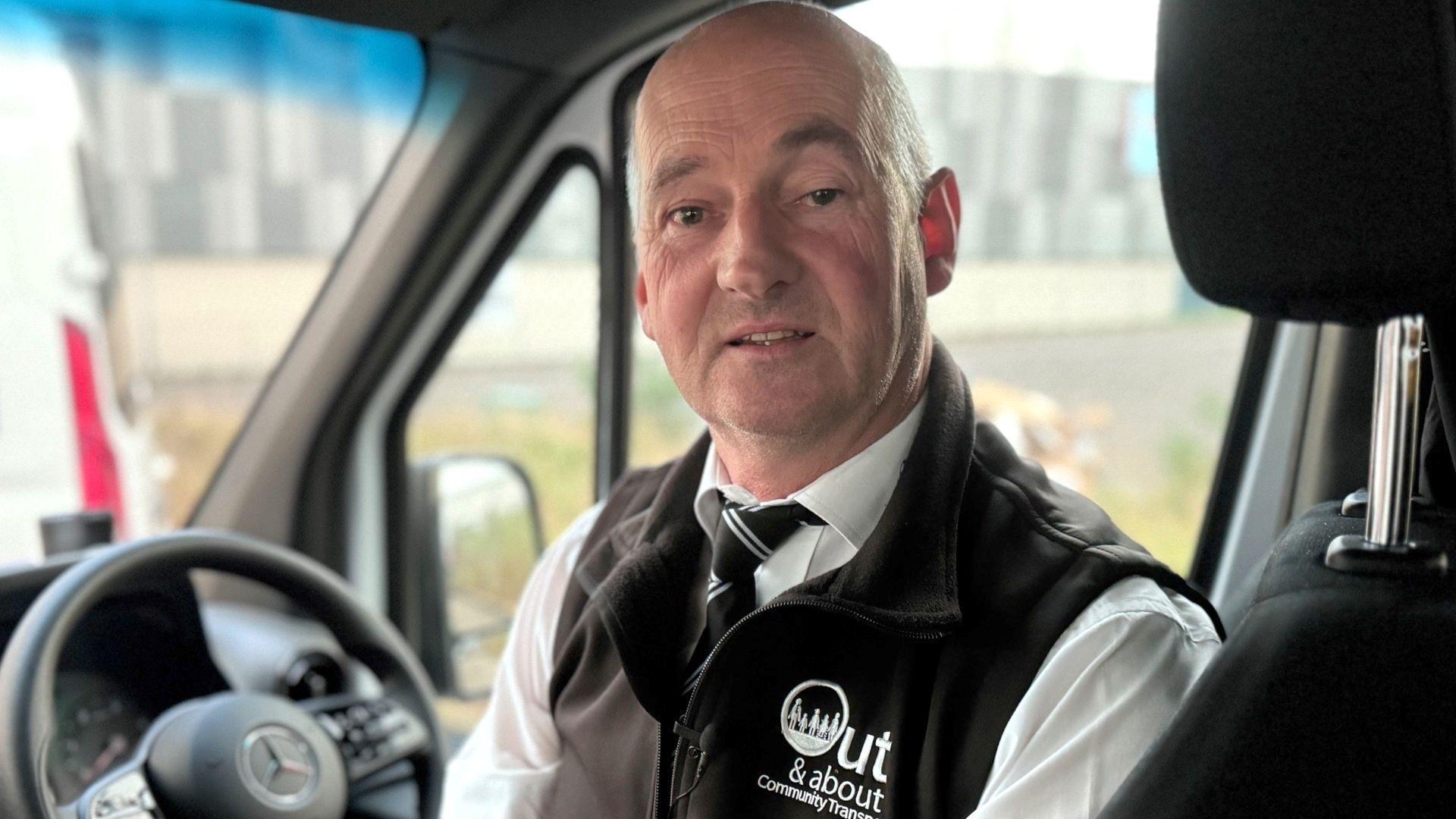
Frances Scullion is a driver with Out and About in Magherafelt
BBC News NI previously reported on how the road network here is facing its biggest funding crisis in more than 25 years.
Additional money was announced for Northern Ireland’s government departments as part of Stormont’s budget reallocation earlier this week.
A total of £62.4m was allocated to the Department for Infrastructure (DfI) - with £22.8m for ongoing budgets and £39.6m towards capital spending.
But it is unclear how much of it will be set aside to deal with road maintenance, as a chunk of it is being ringfenced to address problems with Northern Ireland’s wastewater infrastructure.
BBC News NI has asked DfI how much is being allocated to road maintenance, but has not yet received a response.
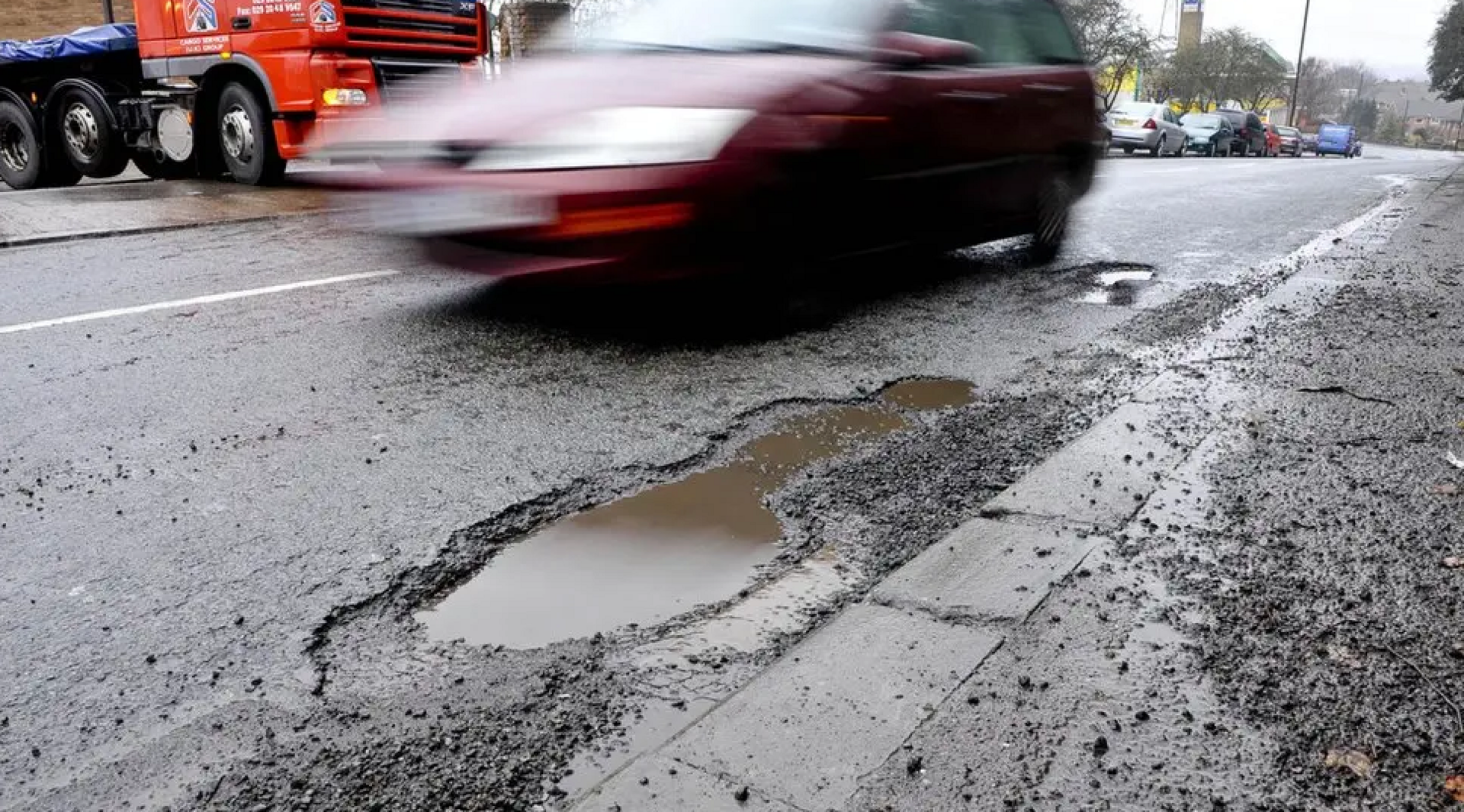
More than £500m has been spent on trying to fix Northern Ireland’s roads during the last five year
Out and About Community Transport makes about 200,000 journeys annually, taking vulnerable passengers to appointments and the shops - it is raising serious concerns about the state of the roads.
Mr Scullion, who spends his days driving for the dial-a-lift service, said rural roads in Mid Ulster were "very tired" and "the edges have eroded away".
“When I’m driving these roads I’m always having to scan ahead to see just where the potholes are, because there are plenty of them," he said.
“Rural roads make up about 60% of my journeys, and they are continuously eroding and wearing on the vehicle’s suspension and it’s causing ongoing damage to the buses.”
'I'm constantly called about potholes'
£500m was spent on fixing roads across Northern Ireland in the last five years
For most local councillors, especially those in rural areas, the issue of potholes is not a new one.
Malachy Quinn, an SDLP councillor in Mid Ulster, said people "can sometimes mock councillors for getting pictures beside potholes and things like, but it’s probably the issue I get people calling me and talking to me about most in this area".
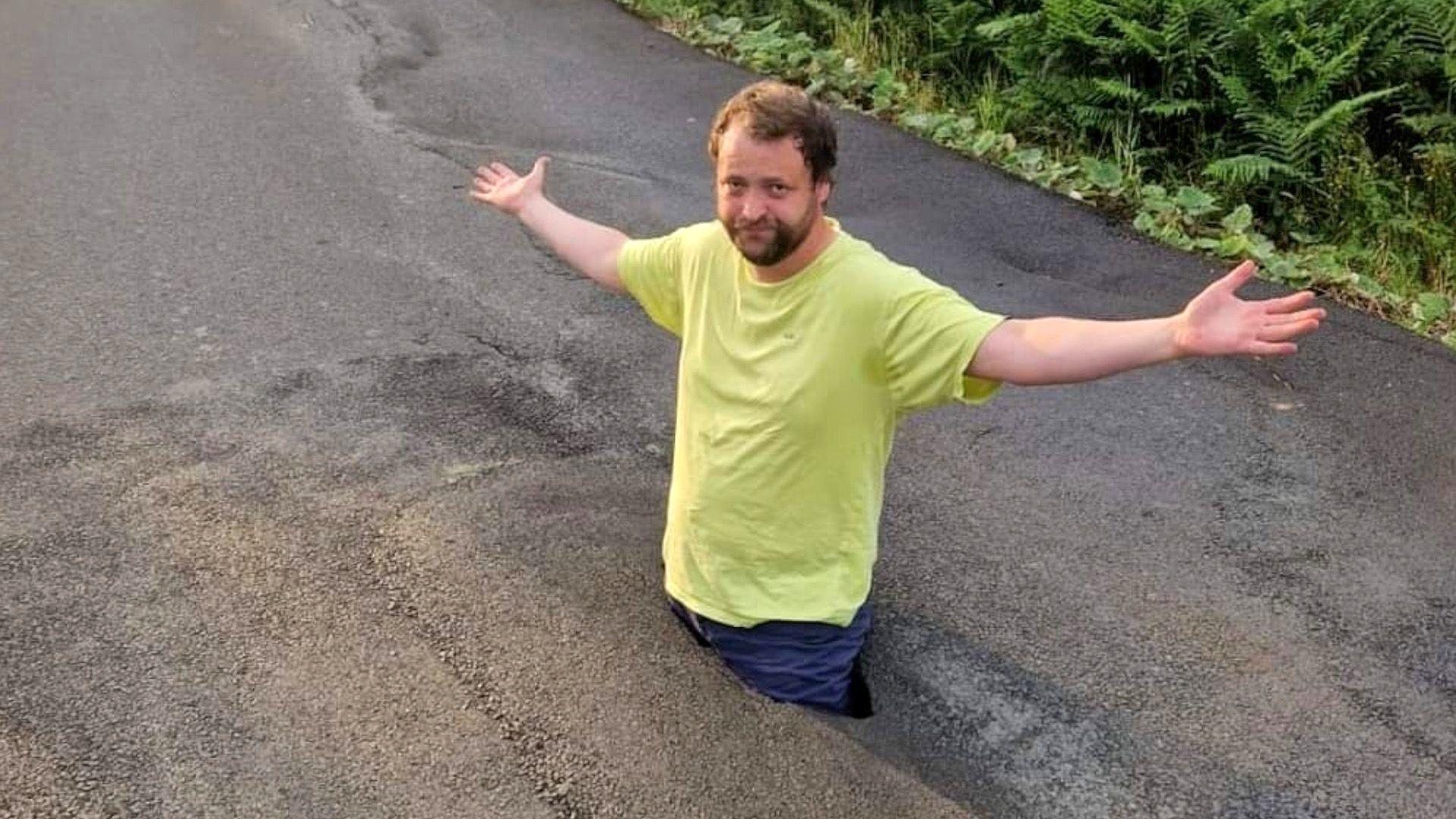
Councillor Malachy Quinn standing in a deep pothole on the Ferry Road last year
For years he has been on a mission to raise the state of the Ferry Road in the Washingbay area of County Tyrone.
Last year he posted a picture on social media of himself standing hip deep in a pothole on the road.
“That picture did get a lot of reaction, and although it was filled in after that, it’s already started to fall away again into a pothole, but that’s just one example.
"That road is full of them.
“These are potholes that have formed during the summer, and things are only going to get worse during the winter.
“We’ve had some resurfacing schemes and you can see how much is being spent on road repairs, and while investment is welcome, it’s just papering over the cracks.”
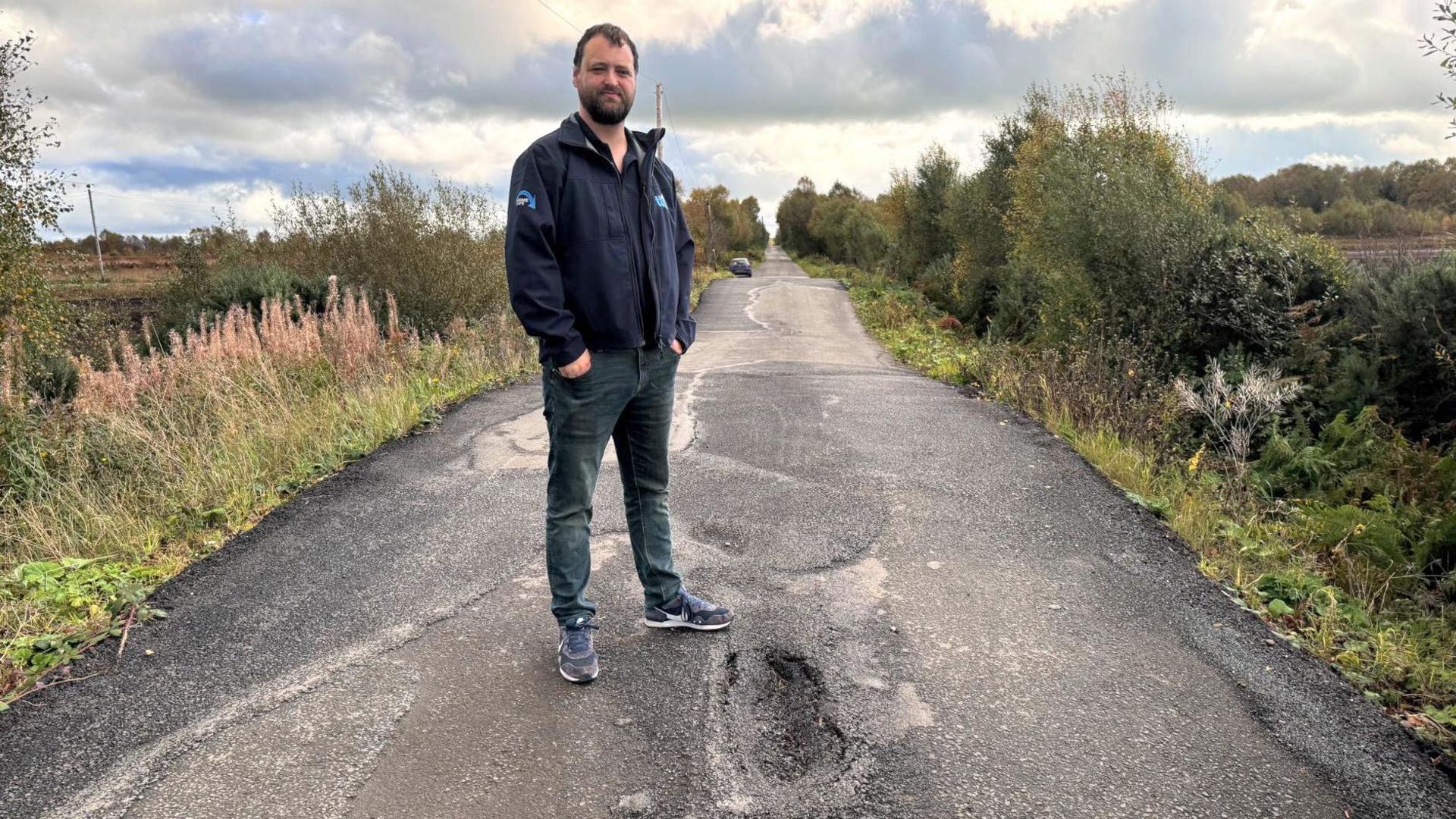
Malachy Quinn standing at the same pothole a year later, which is beginning to open up again
What does road maintenance involve?
DfI figures show there have been almost 120,000 road defects and potholes recorded in Northern Ireland since January this year, and structural maintenance expenditure has been increasing year on year.
Structural maintenance includes resurfacing and reconstruction of roads and footways, as well as investment in both drainage infrastructure and in the structural stability of embankments.
The majority were recorded in the western roads division which includes parts of Mid Ulster, Fermanagh and Londonderry.
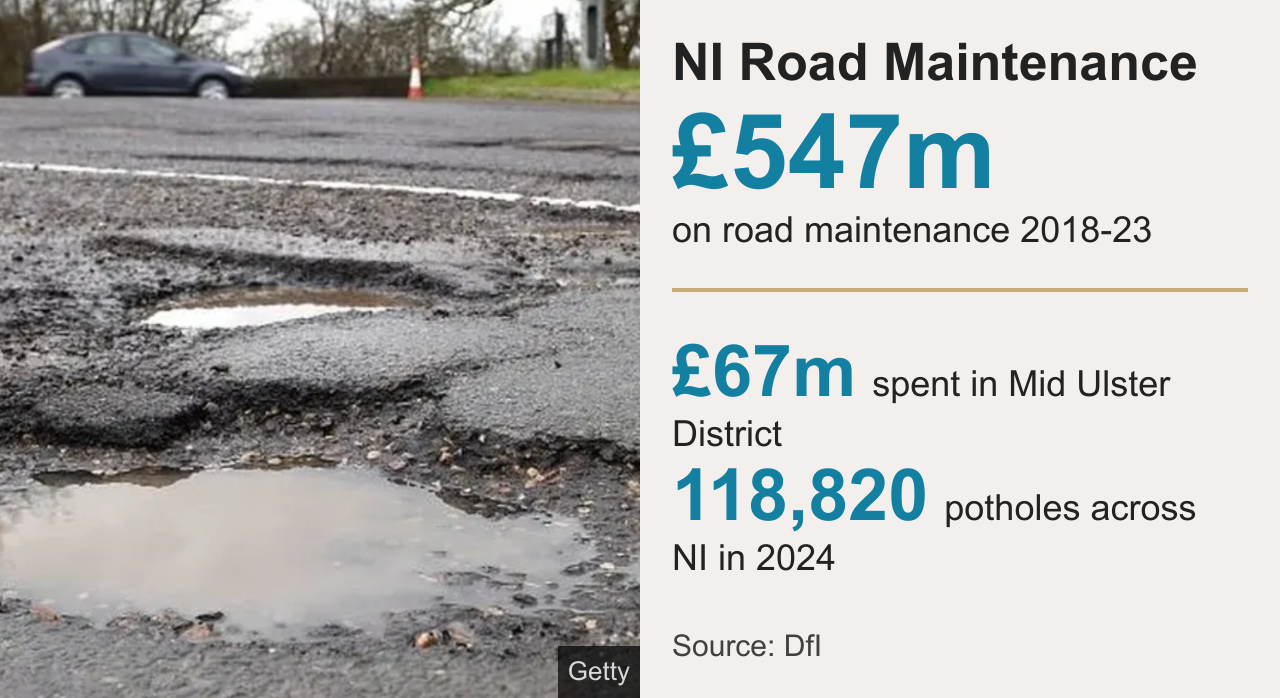
Almost 120,000 potholes were detected across Northern Ireland in 2024
Clement Cuthbertson, a DUP councillor for Mid Ulster, said the figures "mightn't be considered that surprising given that Mid Ulster has so many rural roads and important trunk roads that constantly need maintenance".
“So while the money being spent is welcomed, and it’s high, the state of the roads show it’s not enough when you look at the level of potholes that we still have.”
Jason Donaghy, who manages the Fermanagh Community Transport service, said potholes make life even harder for passengers with painful physical conditions.
"The roads make for a very uncomfortable and increasingly unsafe journey for folks who are already very, very vulnerable," he said.
Mr Donaghy told the BBC's Good Morning Ulster programme that repairs were taking place, but they were only a short-term solution.
"What we do see is a patch-up job and a very poor patch-up job at that.
"No sooner are they filled to the holes reoccur again very, very quickly," he said.
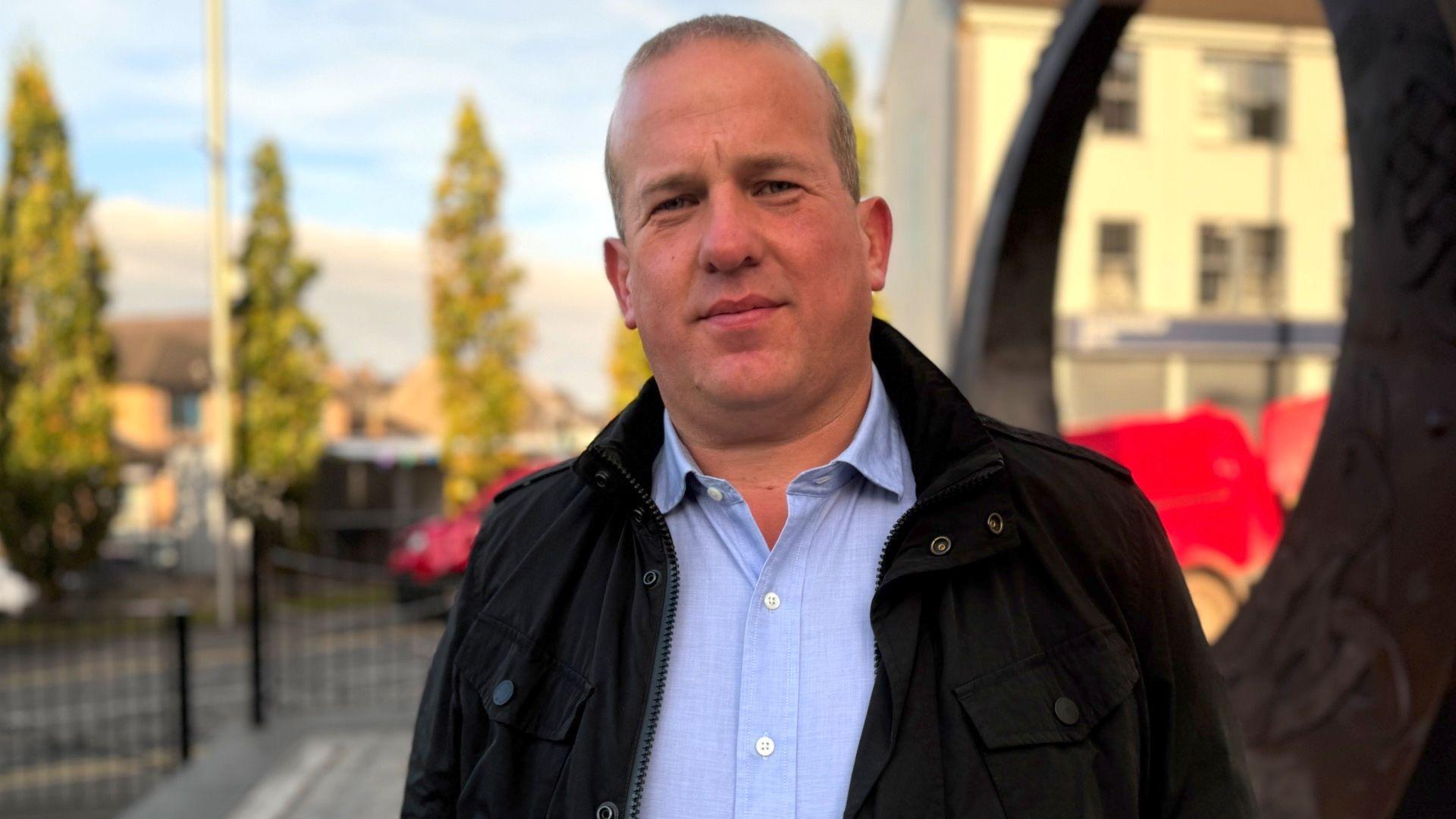
Clement Cuthbertson believes more investment is needed in mid ulster's road infrastructure
Potholes 'allowed to get deeper'
DUP assembly member Stephen Dunne, who sits on Stormont's infrastructure committee, said it was important to point out that poor road maintenance is both "a rural and urban issue".
But he acknowledged that in some areas, potholes are now allowed to get deeper before they are fixed.
The Department of Infrastructure intervenes when a pothole reaches a depth of 20mm, but on roads which carry a low volume of traffic the intervention level was recently changed to 50mm.
“So that has had a significant impact, where many potholes are left to further deteriorate,” Mr Dunne said.
"I think we have an approach from the department where it’s penny wise, pound foolish, where they seem to be prepared to simply pay out on claims rather than getting to grips with the issue."
Mr Dunne insisted the committee has "consistently challenged" the minister on potholes.
Infrastructure Minister John O’Dowd recently launched the Road Safety Strategy to 2030, which sets the direction for future road safety policies and actions.
This includes regular inspections of the road network to identify defects with funding targeted at areas of greatest need.
A DfI spokesperson added: “Sadly, evidence shows that more than 95% of road deaths are due to human error – including careless or inattentive driving, inappropriate speed for the road or the conditions, and drink and drug driving account for most deaths and serious injuries.
“One of the best ways to ensure safety on our roads and fulfil our long-term goal of eliminating death and serious injury by 2050, is by changing road user behaviour.”
Related topics
- Published16 October 2024
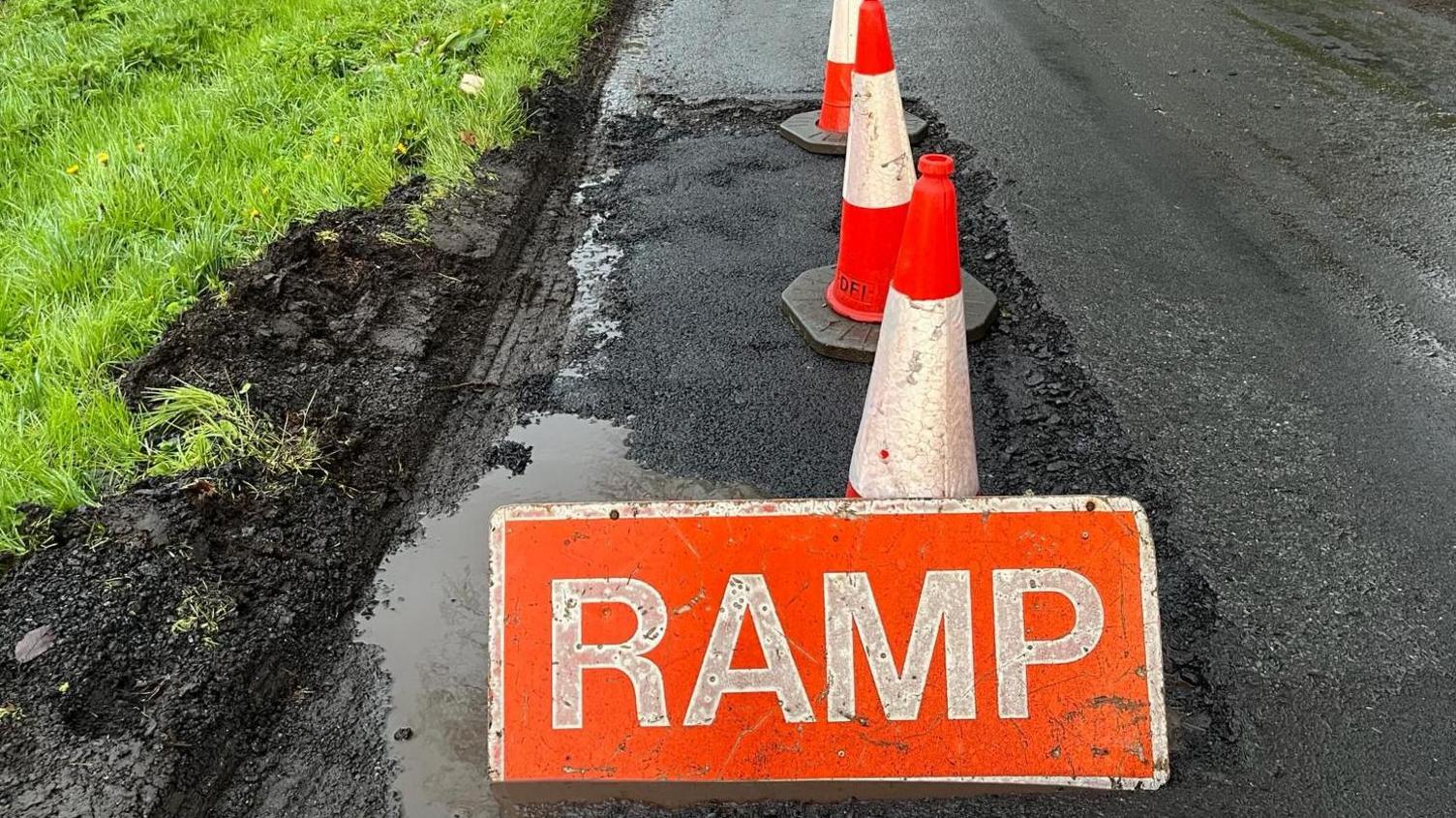
- Published29 January 2024
